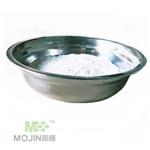- 4-Vinyl-1-cyclohexene
-

- $0.00 / 25KG
-
2023-08-23
- CAS:100-40-3
- Min. Order: 1KG
- Purity: 99%
- Supply Ability: 50000KG/month
- 4-Vinyl-1-cyclohexene
-

- $10.00 / 1KG
-
2021-10-14
- CAS:100-40-3
- Min. Order: 1KG
- Purity: 99%
- Supply Ability: 5tons
- 4-Vinyl-1-cyclohexene
-

- $1.00 / 1KG
-
2019-07-12
- CAS:100-40-3
- Min. Order: 1KG
- Purity: 99%
- Supply Ability: 25kg
|
| | 4-Vinyl-1-cyclohexene Basic information |
| | 4-Vinyl-1-cyclohexene Chemical Properties |
| Melting point | -101 °C | | Boiling point | 126-127 °C(lit.) | | density | 0.832 g/mL at 25 °C(lit.) | | vapor density | 3.76 (vs air) | | vapor pressure | 10.2 mm Hg ( 25 °C) | | refractive index | n20/D 1.463(lit.) | | Fp | 68 °F | | storage temp. | 2-8°C | | form | Powder | | color | Off-white to beige-brownish | | Specific Gravity | 0.832 | | Water Solubility | 50mg/L(25 ºC) | | BRN | 1901553 | | LogP | 3.93 at 25℃ | | CAS DataBase Reference | 100-40-3(CAS DataBase Reference) | | IARC | 2B (Vol. Sup 7, 60) 1994 | | EPA Substance Registry System | 4-Vinylcyclohexene (100-40-3) |
| | 4-Vinyl-1-cyclohexene Usage And Synthesis |
| Chemical Properties | Liquid. Temperatures
above 80F (26.6C) and prolonged exposure
to oxygen-containing gases should be avoided
because these conditions lead to discoloration and
gum formation. | | Chemical Properties | 4-Vinyl-1-cyclohexene, a cyclic alkene, is a
highly flammable liquid. | | Uses | As an intermediate in the
production of flame retardants, flavors, fragrances,
and vinyl cyclohexene dioxide (which
itself is used in the manufacture of epoxy
resins); found in gases discharged during the
process of curing rubber in tire manufacturing. | | Uses | Polymers, organic synthesis. | | Definition | ChEBI: 4-Vinylcyclohexene is a cyclic olefin. | | Production Methods | 4-Vinylcyclohexene is produced by dimerization of butadiene,
as a by-product of chlorination of butadiene, or frombutadiene
on long storage. | | Synthesis Reference(s) | Journal of the American Chemical Society, 108, p. 1322, 1986 DOI: 10.1021/ja00266a047
Synthesis, p. 1027, 1984 | | General Description | Colorless liquid. Floats on water. Temperatures above 80F (26.6C) and prolonged exposure to oxygen-containing gases should be avoided because these conditions lead to discoloration and gum formation. | | Air & Water Reactions | Highly flammable. 4-Vinyl-1-cyclohexene oxidizes in air to form hydroperoxides. Slightly soluble in water. | | Reactivity Profile | 4-Vinyl-1-cyclohexene can react with oxidizing materials. 4-Vinyl-1-cyclohexene is also incompatible with peroxide catalysts. Prolonged exposure to oxygen-containing gases leads to discoloration and gum formation. . | | Health Hazard | Exposure can cause irritation of eyes, nose and throat. High concentrations have a narcotic effect. | | Safety Profile | Confirmed carcinogen
with experimental carcinogenic,
neoplastigenic, and tumorigenic data.
Moderately toxic by ingestion and
inhalation. MilcU~7 toxic by skin contact.
Experimental reproductive effects.
Dangerous fire hazard when exposed to
heat, flame, or oxidizers. Can react with
oxidizers. To fight fire, use foam, CO2, dry
chemical. | | Potential Exposure | 4-Vinyl-1-cyclohexene is used as an
intermediate for the production of vinylcyclohexene dioxide,
which is used as a reactive diluent in epoxy resins.
Previous uses of 4-vinyl-1-cyclohexene include comonomer
in the polymerization of other monomers and for halogenation
to polyhalogenated derivatives which are used as flame
retardants. | | Carcinogenicity | A dose of 145 g/kg applied to
mouse skin for 54 weeks provided weak evidence of carcinogenicity
(109). Administration by gavage of doses of 0,
200, or 400 mg/kg body weight, 5 days per week, to groups of
50 F344/N rats for 103 weeks induced a slightly increased
incidence of epithelial hyperplasia of the forestomach (1/50;
3/50; 5/47) and squamous cell papillomas or carcinomas
(combined) of the skin, in males receiving the highest dose.
Low-dose female rats whose survival was more similar to that
of the vehicle controls had a marginally increased incidence
of adenomas or squamous cell carcinomas (combined) of the
clitoral gland. Under these conditions, the 2-year gavage
studies in male and female rats were considered inadequate
because of extensive and early mortality at the high dose or at
body doses and the lack of conclusive evidence of a carcinogenic
effect (125a). In female Fisher 344 rats treated with this
agent to induce ovarian failure followed by application of the
carcinogen dimethylbenzanthracene (DMBA) directly to the
ovaries, there resulted tumors in 42% of animals at 3 months
and 57% at 5 months (126b). All neoplasms were classified
Sertoli–Leydig cell tumors (SLCT). No tumors occurred in
animals treated with vehicle or DMBA alone. | | Shipping | UN1993 Flammable liquids, n.o.s., Hazard
Class: 3; Labels: 3-Flammable liquid, Technical Name
Required. | | Incompatibilities | Vapor may form explosive mixture with
air. Hydrolyzes in water. Incompatible with oxidizers (chlorates,
nitrates, peroxides, permanganates, perchlorates,
chlorine, bromine, fluorine, etc.); contact may cause fires
or explosions. Keep away from alkaline materials, strong
bases, strong acids, oxoacids, epoxides, amines, alcohols. | | Waste Disposal | Dissolve or mix the material
with a combustible solvent and burn in a chemical
incinerator equipped with an afterburner and scrubber.
All federal, state, and local environmental regulations must
be observed. |
| | 4-Vinyl-1-cyclohexene Preparation Products And Raw materials |
|